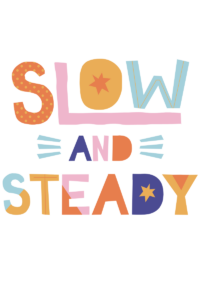I wanted to share a recent experience I had at an office supply store. I was looking to buy a new computer chair because the desk that I purchased was higher than what I expected. To be honest, I purchased the desk without even looking at the measurements. It just looked pretty. The chair I needed had to have a seat that was approximately 23 inches high.

I go to the store and check out the chair section. I see that all of the chairs have tags with measurements of the length, width, and height. However, the height listed is for the overall chair.
I pulled over an employee to ask if there was something in the back that listed the actual height of the seat since I needed one that was 23 inches.
The employee kept pointing at the tag of the chair saying “ma’am this says the height.” I responded with “I think this is the height of the chair, not the seat.” The young man argued no, and we kept going like that for a minute or so.
I said “thank you for your help”, and he walked away. I was with my 8-year-old son and explained to him why that was not the correct height of the seat. If a yardstick is 36 inches and this tag says 38 inches. There is no way that the seat height is nearly a yardstick. My son understood, and we were ready to go on our way. But then I decided to go back in and have a short conversation with that young man. My goal was not to be confrontational (and I wasn’t) I just wanted to explain what I just mentioned to my son. He gave me a brief nod and moved on to what he was doing. I didn’t take offense that he was not interested in what I was explaining. Once you mention something with math, there is a visual “tuning out” that you see in people. But I did feel the need to have a math conversation regardless.

So why am I sharing this story? Measurement units are often touched on briefly in curriculums because they are not focus standards. I believe this hurts our children. If we can’t approximate a yardstick, that is a problem.
Measurement routines should be continuously explored in our classrooms. These activities should not just be limited to a worksheet where students use a ruler or circle the correct answer but instead should be real-world experiences.

In Marian Small’s book Great Ways To Differentiate Mathematics Instruction, she gives some examples of these activities.
- What can you find in the classroom that is about as long as your arm?
- You want to describe to someone how long your pencil is. You can’t show the person the pencil, but have to use words. How could you help the person understand its size?
- You’re reading a clock with hands, and the hands are really close together, but not on top of each other. What time might it be?
- Look at a page of a newspaper that has both advertising and news. Which area is greater- the area for the ads or the area for the news?
Ok, so we can easily say “some people just don’t have spatial reasoning” but isn’t that something we could build? Growth mindset applies to every skill. If we have more real-world experiences with measurement, wouldn’t it help us approximate better in the real world?
Try to incorporate some measurement activities during a morning routine, center, closure routine or a working snack. It doesn’t have to take that much time out of your day to have discussions regarding measurement.
Also, when going through your district’s curriculum, advocate for measurement to be sprinkled throughout the year as opposed to a short isolated block.
Want to check out more?
MEMBERSHIP SITE:
https://zennedmath.com/online-courses/
FACEBOOK GROUP: Zenned Math Teachers
https://www.facebook.com/groups/zennedmathteachers/
YOUTUBE CHANNEL: Zenned Math
https://www.youtube.com/channel/UC5njH_5LoK6G67BvZecGfnw?
WANT ME IN YOUR INBOX? Sign up for my newsletter
https://view.flodesk.com/pages/5efc876dcaabca0028b95eb5
DISCLAIMER: Some links included in this blog might be affiliate links. If you purchase a product or service with the links that I provide, I may receive a small commission. There is no additional charge to you!

